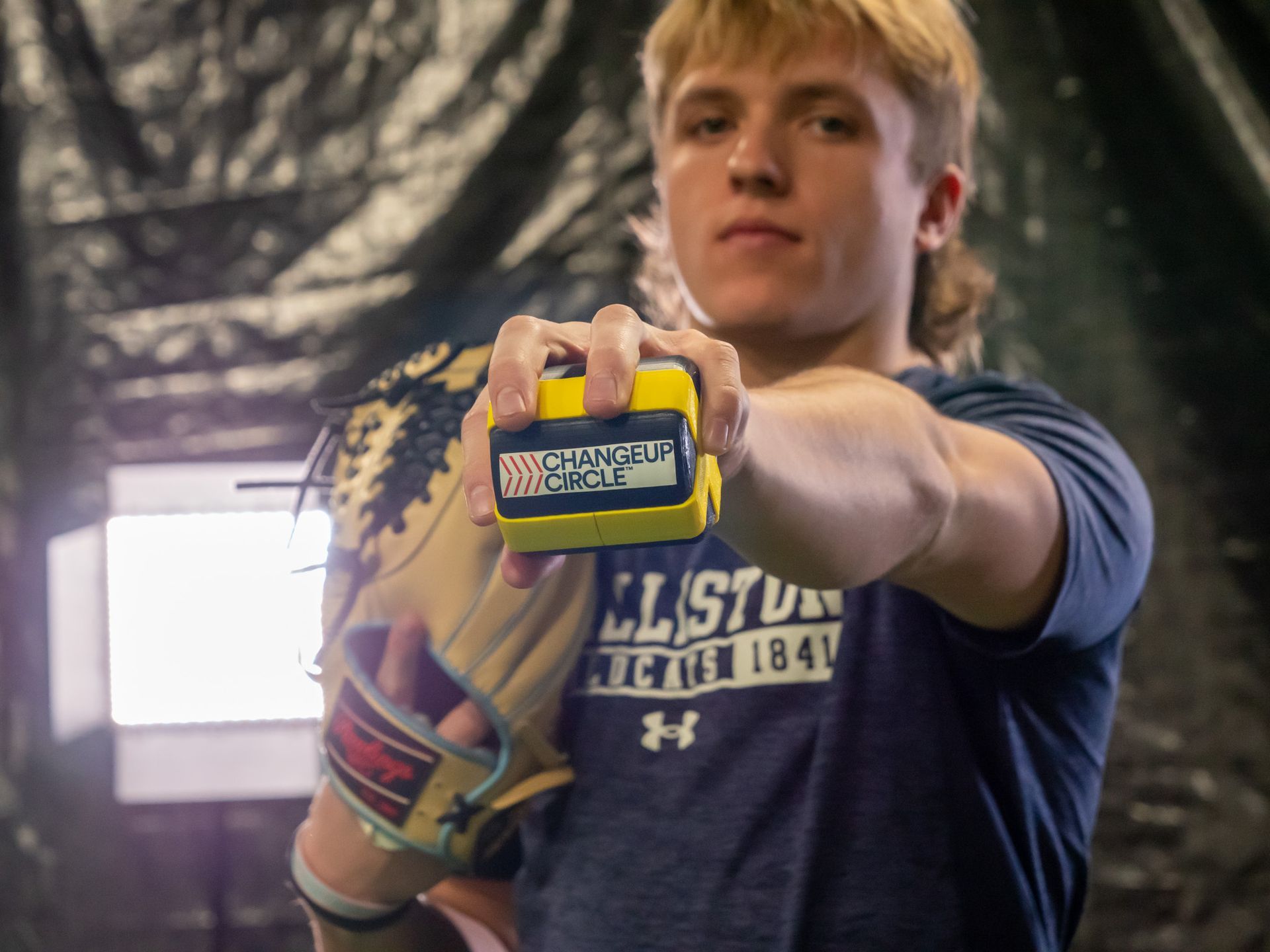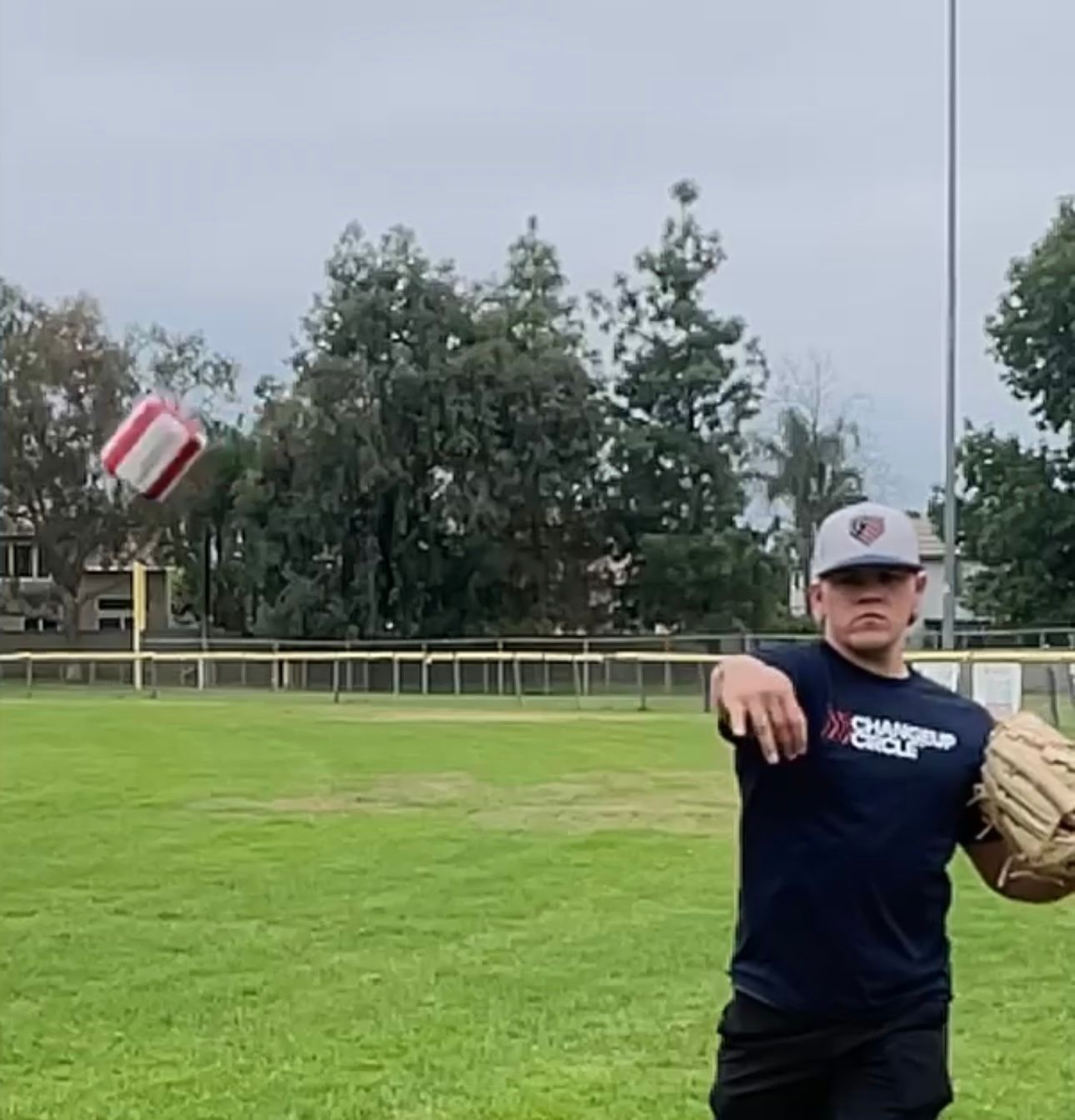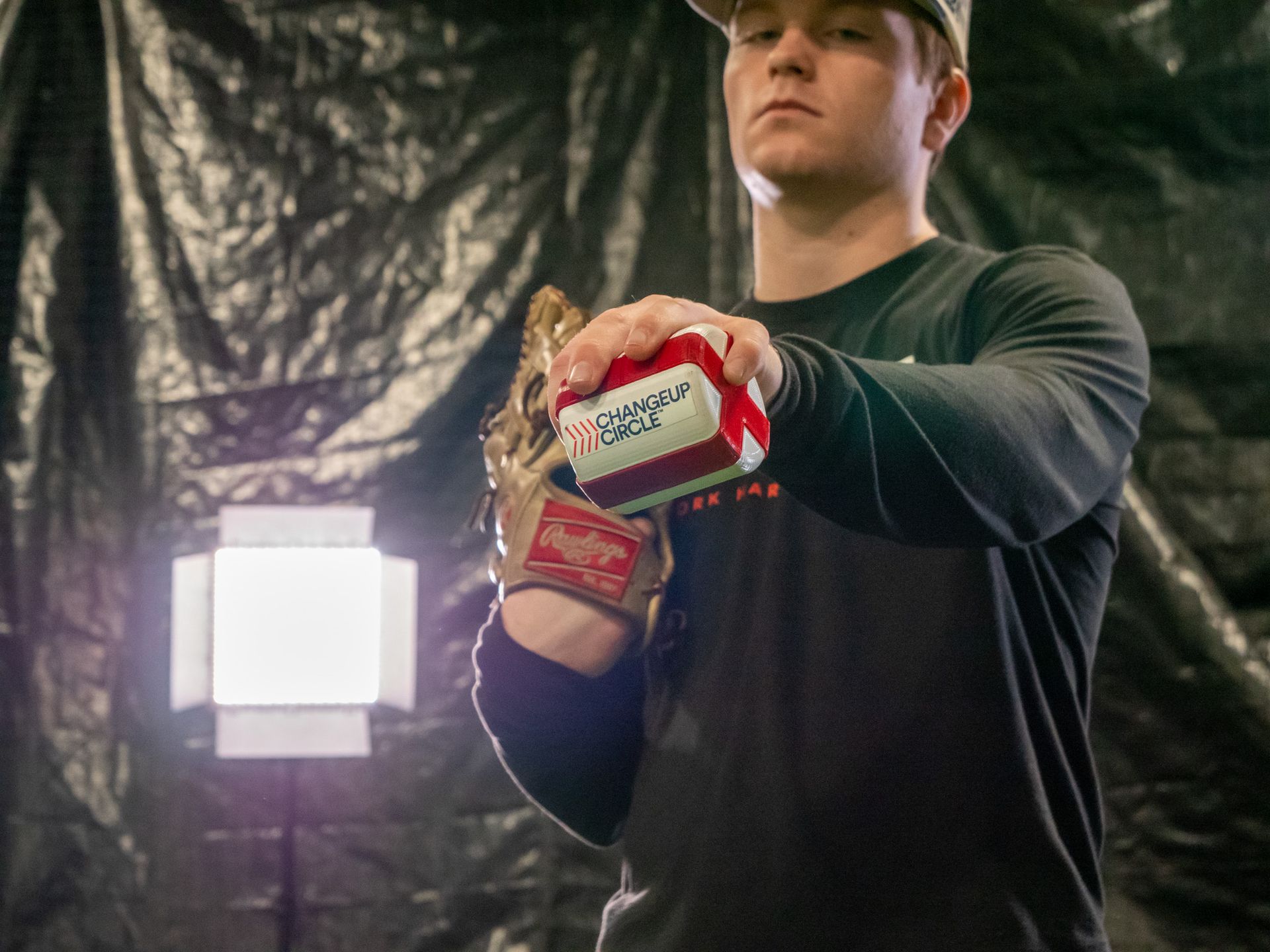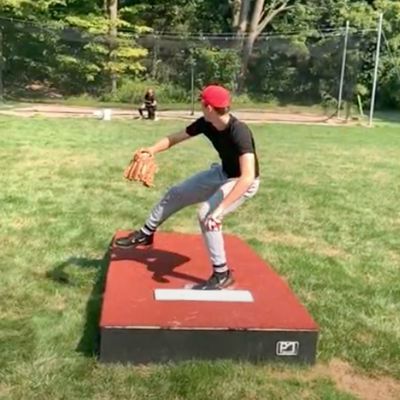How It Works
Here's how the Changeup Circle ™ works - and why it works so well.
How to implement the Changeup Circle ™
Train to perfect your Changeup pitch.
Be more efficient in your throw.
/ Changeup Circle ™ How it works
Instructional Videos
How To Implement The Changeup Circle
Train to perfect your Changeup pitch.
Be more efficient in your throw.
You will first need to familiarize yourself with the product to understand some fundamentals. These include learning the differences between being outside the ball, or supinated, by seeing the X on the Changeup Circle during the throw (improper throw) and throwing on a tilted axis by releasing early into pronation (proper throw for the changeup pitch). You will also need to learn to stay behind the ball with flat flight path (proper throw as explained further in Section 3).
Start with catch play to get the feel of the Changeup Circle using the 5oz model to see and develop the proper feel and flight of the device.
Once you have seen the proper flight and started to develop the right feel, move to an 8oz or 10oz model and create that same feel and flight. From there, alternate between the weighted Changeup Circle and a baseball. Continue to create the feel and flight, alternating between the Changeup Circle and a baseball. At this point, You should start to see some changes in the flight of the ball.
WARM UP REGULARLY WITH A BASEBALL
You can use the 5oz Changeup Circle™ as your warmup tool as well.
RELEASING EARLY INTO PRONATION
Now, for the proper flight for the changeup pitch with the Changeup Circle, the flight of the Changeup Circle will be a little different. You need to get the Changeup Circle on a tilted axis
in flight with no wobble, feeling that through the middle & ring fingers. This is referred to as
releasing early into pronation.
PLAY CATCH WITH 5OZ. MODEL
All players can play catch and learn to stay behind the ball using a flat spin flight to get into the natural pronation and be more efficient with their throwing. We recommend position players use a fastball or three-finger grip and pitchers to alternate between a circle-change grip and a fastball grip creating the same flight with no wobble. This warm-up can be played all the way into long toss if you choose. We recommend that weighted circles only be used up to the distance of the mound only.
When moving from the mound, pitchers may work up to full speed with the 5oz Changeup Circle. Remember to understand the concept of getting the Changeup Circle on a tilted axis by releasing early into pronation for the Changeup.
Flat Spin Flight (Proper Throw)
Supinated Throw...See The "X" (Needs Work)
CREATING THE PROPER FEEL
The object for the weighted Changeup Circles is to create the feel through the middle and ring fingers while throwing. You may play catch up to the distance of the mound before alternating between a weighted Circle and a baseball to create that ultimate feel.
When using the weighted Changeup Circles from the mound, again, you do not need to throw them at full speed, we suggest up to a max of 65%. The goal here is to throw a few weighted tosses in your pitching motion, in a nice and easy motion on a tilted axis, releasing early into pronation with no wobble. Once you have your throw down, you can alternate between a weighted Changeup Circle and a baseball.
You should be able to feel and see the results when throwing the Changeup Circle on the tilted axis, also referred to as early into pronation and continue to roll the baseball over when throwing.
ROLL THE BALL OVER
When throwing the baseball, we use the phrase “roll the ball over” or “roll over the ball.” This refers to using the middle and ring fingers. Our recommendation is to maintain a loose grip off the palm, pointer finger and thumb in circle and pinky opposite the ball as guides.
You will need to perfect how long you hold onto the ball into pronation to get the action you’re looking for. Some pitchers may prefer the ball in the palm, but we suggest sticking with what’s best for you. One thing to note
is that holding on too long into pronation creates a spike of the ball.
HOW OFTEN SHOULD I THROW THE CHANGEUP CIRCLE?
Well, how often do you play catch? Some players play catch every day, so when you play catch, go for it. As a general recommendation, we suggest players to play catch 4+ times a week and to have a solid understanding of their own personal throwing volume. The Changeup Circle is also good to use in bullpen sessions and your pre-game warmup.
Models & Weights
Why To Use Weighted Changup Circle™
"Outside the Ball" & Wrist Flexion Drill
Alternating Between Weighted & a Baseball Creating The Feel
Creating More Feel & Comfort Of The Pitch with The Weighted Changup Circle™
Talking To Youth Coaches
/ Changeup Circle ™ Demo
Changeup Circle ™ Revolutionizes How Pitchers Develop Their Overall Skills
Watch how the Changeup Circle ™ can drastically improve a player's changeup pitch as well as decrease the time traditionally needed to learn the movement of the pitch.
Staying Behind The Ball
As a coach, I discovered during warmups that most young players were doing what I call “throwing outside the ball” aka throwing the baseball or softball like a football.
The Changeup Circle ™ is designed to correct that tendency by teaching players to use wrist flexion upon release—properly sequencing the kinetic chain for maximum throw control with the minimum resistance and injury risk.
Be More Efficient In Your Throw

Releasing Early Into Pronation
After you learn to Be more efficient by staying behind the ball, we now get into throwing the Changeup pitch itself.
The Changeup Circle is thrown on a tilted Axis. This is called Releasing Early into Pronation, as we still create that feel thru the middle and ring fingers.
Again, smooth flat flight, no wobble, but on a Tilted Axis.

Throwing The Perfect Changeup
The changeup pitch has many variations to perform the pitch, but I discovered that the device was an instrumental tool for a pitcher to understand the changeup pitch. Both in grip and feel. As they released the Changeup Circle ™ and then put a baseball in their hand, they saw results and the differences between the fastball and the changeup both in speed and ball flight and trajectory.
The Changeup Circle ™ also helps players develop the understanding of pronation in their throw. They can feel and see how pronation is important especially in the changeup pitch. This will develop the pitch to create horizontal run or vertical drop—and for some players both.

Arm Care
There has been an epidemic of UCL injuries in baseball and softball—from the majors down to the high school level. And it’s not just pitchers anymore. It has become an issue for position players as well. Contributing factors include “overuse”, and improper mechanics.
The Changeup Circle ™ helps players develop proper throwing mechanics, promoting arm care, and aiding in success on the mound and in the field.
With that said I also recognize and recommend that all players have a proper warmup and agility program. Along with that, there should be a proper stretching series for flexibility in the sport.

/ Contact Us
Have Questions or Need Support? Contact Us
The Changeup Circle ™ is designed to help baseball players of all ages improve their game. If you have any questions or need support, please feel free to contact us for more information. We are here to help you get the most out of your practice and take your pitching skills to the next level.

Contact Us
We will get back to you as soon as possible.
Please try again later.
*Weighted device is not intended for long distance throwing. Individual player must have the ability to play catch. Changeup Circle ™ not intended to be batted or hit
**Weighted models are not intended for long distance throwing or throwing at high speeds
***Always use a baseball/softball glove to play catch with the Changeup Circles
****Adult supervision is recommended when using the Changeup Circle ™
*****All weights are approximate
All Rights Reserved | Changeup Circle ™
*We accept for a refund for unused and unopened items for a period of 14 days from delivery. Customer is responsible for the return cost of shipping. All returns subject to a handling and restocking fee. Return to: Changeup Circle P.O. Box 11 Sanibel, FL 33957




